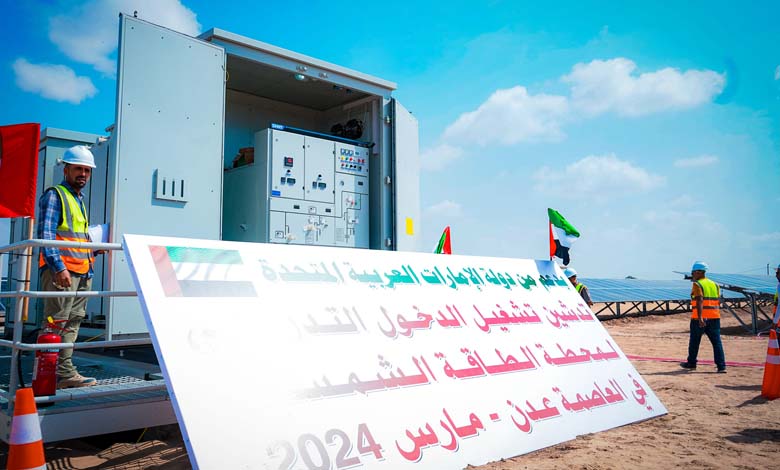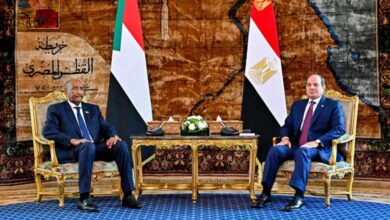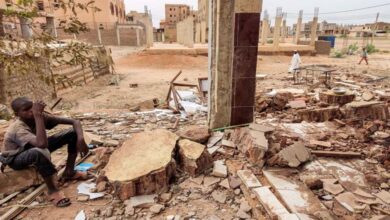Largest strategic project.. The UAE supports the largest solar power station in Aden

As the first and largest strategic project for clean and renewable energy in the country, the Emirati solar power station in Yemen entered service on Monday.
The Minister of State in the Yemeni government, Governor of Aden Ahmed Lamlas, inaugurated today the gradual entry of the solar power station provided by the United Arab Emirates after connecting it to the electrical system of the temporary capital Aden.
The trial operation began generating between 20 and 30 percent of the total capacity of the station, which is 120 megawatts, on the way to full operation of the station within a maximum period of 3 months.
During the inauguration, Lamlas emphasized “the importance of this station entering service for the electricity system and reducing the use of fuel-operated stations,” which cost the Yemeni government more than $100 million monthly.
The Yemeni official praised the support of the United Arab Emirates to the electricity sector and various sectors in Aden, which is considered an extension of the legacy of the late Sheikh Zayed bin Sultan Al Nahyan and his sons, who embody and confirm that they are “the best successors to the best predecessors.”
Lamlas said, “The UAE took the initiative and provided support to the capital Aden and its people deserve it, and we hope that the project will expand in the future to make Aden one of the cities that rely on renewable and clean energy.”
He expressed the local authority’s happiness with the solar power station project, which came under the directives of Sheikh Mohamed bin Zayed Al Nahyan, President of the UAE. He said, “Efforts will continue to provide electricity service and enhance its stability during the summer period, during which the people of Aden suffer every year.”
This station is considered the first and largest strategic project for generating electricity through clean and renewable energy in Yemen, under a joint cooperation agreement between the Ministry of Electricity and Energy in Yemen and the Abu Dhabi Future Energy Company “Masdar” to provide the temporary capital Aden with a solar power station with a total capacity of 120 megawatts.
The agreement also includes the establishment of transmission lines and substations for the transmission and distribution of electricity generated from the station.
This station will work to reduce the cost of electricity generation during daylight hours, as well as the need for fuel for generating stations, and will contribute to environmental conservation by reducing carbon emissions.
The solar power station is located in the town of “Bir Ahmad” west of Aden and extends over a total area of 1.6 million square meters. It was constructed alongside a approximately 9-kilometer transmission line to transmit and discharge energy.
According to Yemeni officials in the electricity and energy sector, the solar power station that entered service does not only include a solar field for energy production, but also a transmission line, which in itself is a strategic project.
Aden suffered from a lack of energy transmission and discharge projects, and a network connection between directorates.
Construction and preparations for the solar power station site began in December 2022, and work continued throughout 2023 to complete the project, with 2024 being the year of its opening.
The Emirati support through the 120-megawatt solar power station is expected to contribute to alleviating the suffering of people from continuous power outages and to save huge amounts spent on rented stations and diesel fuel, reaching about $100 million monthly, according to the Yemeni government.
According to the project’s executing engineers, the station was designed at a high level of professionalism, including withstand wind speeds of 173 km/h through concrete foundations that included 2 meters below ground and 35 cm above ground.
Moreover, the open land area allowed the station to be designed with a capacity of 650 megawatts in the future, where the Yemeni government or any donor can add solar panels to the project to generate 650 megawatts as long as the land area allows, without changing the towers and the rest of the system.












